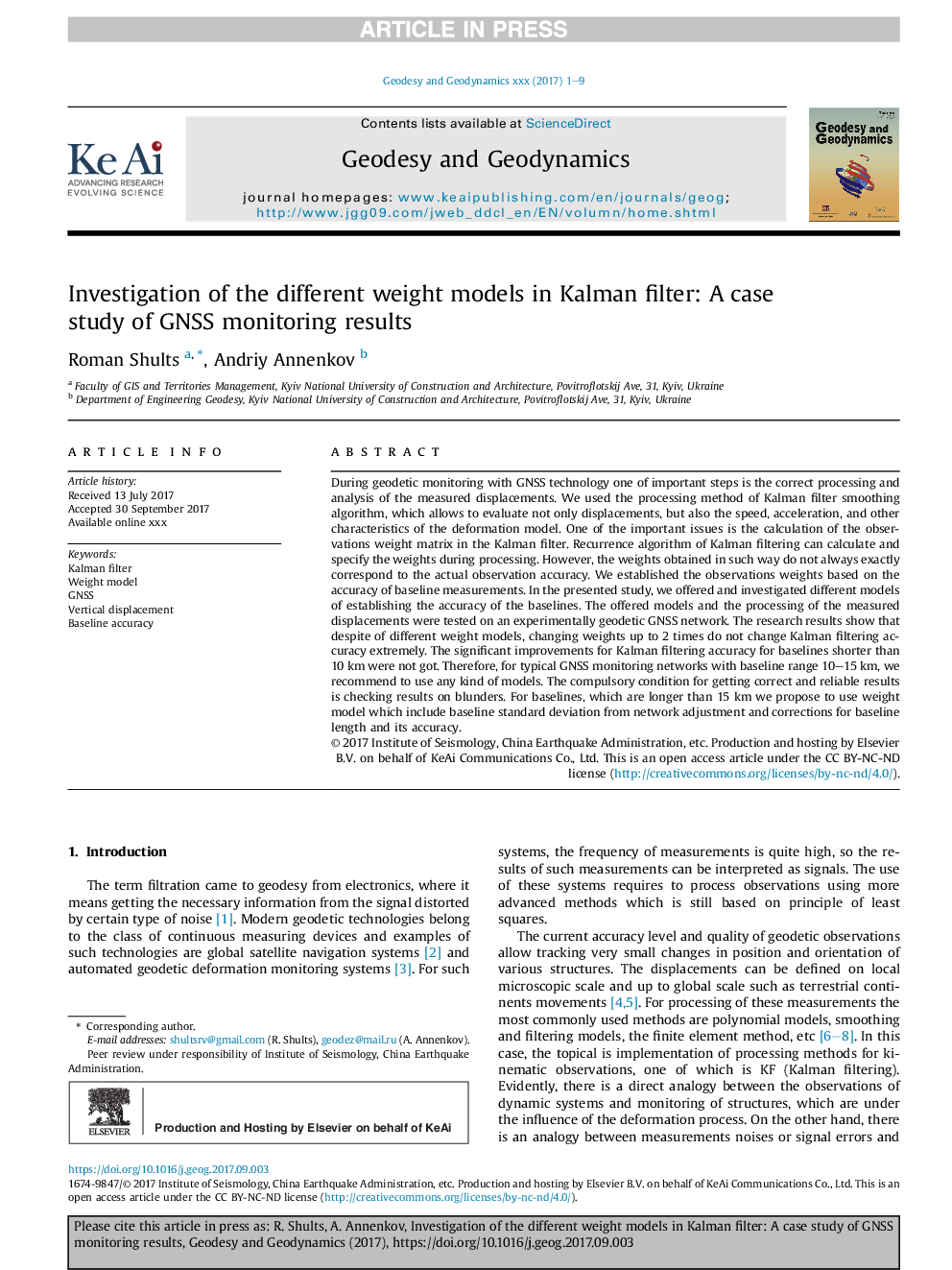| Article ID | Journal | Published Year | Pages | File Type |
|---|---|---|---|---|
| 8907852 | Geodesy and Geodynamics | 2018 | 9 Pages |
Abstract
During geodetic monitoring with GNSS technology one of important steps is the correct processing and analysis of the measured displacements. We used the processing method of Kalman filter smoothing algorithm, which allows to evaluate not only displacements, but also the speed, acceleration, and other characteristics of the deformation model. One of the important issues is the calculation of the observations weight matrix in the Kalman filter. Recurrence algorithm of Kalman filtering can calculate and specify the weights during processing. However, the weights obtained in such way do not always exactly correspond to the actual observation accuracy. We established the observations weights based on the accuracy of baseline measurements. In the presented study, we offered and investigated different models of establishing the accuracy of the baselines. The offered models and the processing of the measured displacements were tested on an experimentally geodetic GNSS network. The research results show that despite of different weight models, changing weights up to 2 times do not change Kalman filtering accuracy extremely. The significant improvements for Kalman filtering accuracy for baselines shorter than 10Â km were not got. Therefore, for typical GNSS monitoring networks with baseline range 10-15Â km, we recommend to use any kind of models. The compulsory condition for getting correct and reliable results is checking results on blunders. For baselines, which are longer than 15Â km we propose to use weight model which include baseline standard deviation from network adjustment and corrections for baseline length and its accuracy.
Related Topics
Physical Sciences and Engineering
Earth and Planetary Sciences
Earth-Surface Processes
Authors
Roman Shults, Andriy Annenkov,
